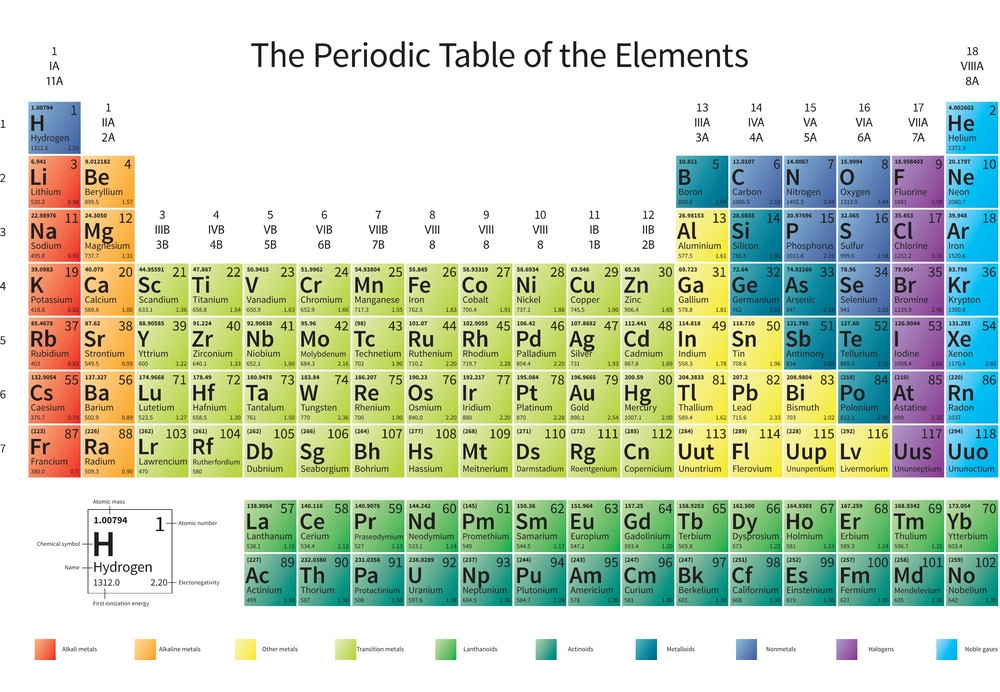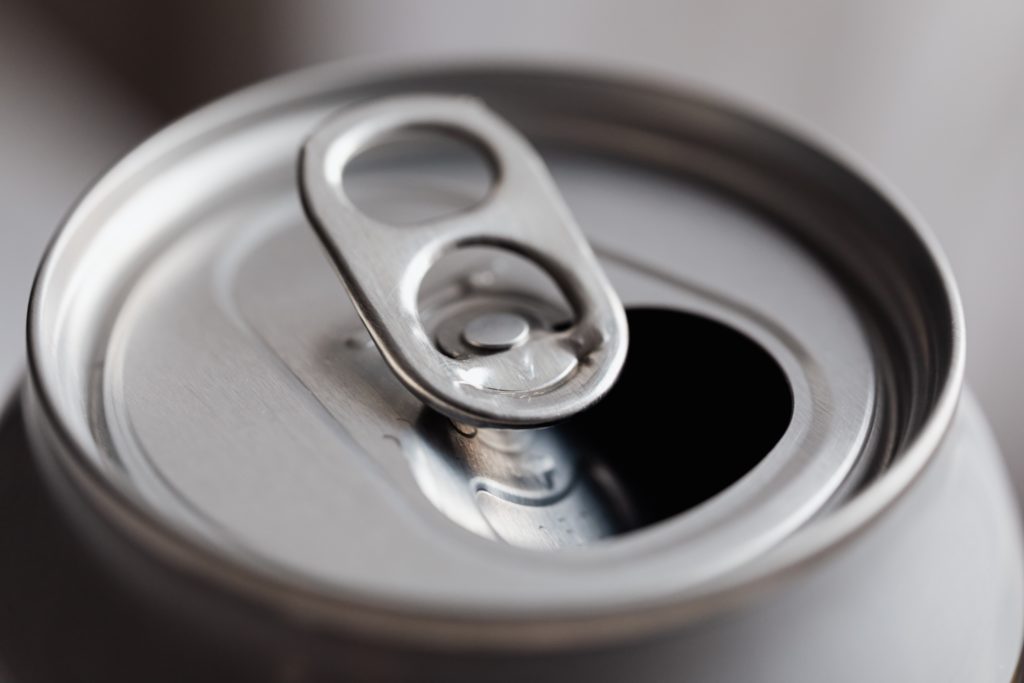A periodic table chart was first discovered by a German Chemist, named Lothar Meyer. He produced several Periodic Tables between 1864-1870. His first table contains 28 elements organized by their valency. While the Russian scientist named Dmitri Mendeleev. Mr. Mendeleev had discover the periodic table in 1869.
The framework for the modern periodic table also leaves gaps for elements to be discovered. The periodic table was also discovered by other scientists which gives it some additional features.
Some features are:-
1) The vertical columns which are call group
2) The horizontal columns are call period.
3) Arrangement of elements in order of increasing relative atomic mass.
4) Gaps were left empty for yet to be discovered elements
Periodic Table With Names

In the periodic table chart, there are groups that are vertical columns. These vertical columns go from group 1 to 7 or 1 to 18 depending on the textbook you read. Each column represents physical properties. Group 1 is also know as the alkali metal. It is in the first group of elements in the periodic table. The elements that are in group 1 are Lithium (Li), Sodium(Na), Potassium(K), Rubidium (Rb), Cesium(Cs), and Francium (Fr) which is a rare radioactive metal.
How The Periodic Table Organized

The metals in group 1 which are in the periodic table chart are extremely reactive. The reason behind this, they are very powerful reducing agents. Which occurs mainly in nature since the group has a positive 1 (+1) cation. Also, group 1 has anomalous behavior of Period 2 (which we will discuss further down in the article). This occurs in group 1 because of the small atomic size and a small number of other-level orbitals which is similar to period 2. Alkali metals have unusual physical properties, these metals are softer and have lower melting, boiling points, and lower densities. This occurs because of their atomic size, the largest in their respective periods, and the valence electrons. The electron configuration for group one is ns1 since the valence for group 1 is one (1).
The trend for group 1 is as you go down the group, the reactivity increases. This occurs because the atoms become larger, while the outer electron becomes further away from the nucleus. Therefore, the force of attraction between the nucleus and the outer electron decreases, and the outer electron is lost more easily. Alkali metals react in four ways.
These are:-
- The alkali metals reduce hydrogen in water. This means the reaction becomes more vigorous down the group.
- Group 1 metal reduces oxygen.
- The alkali metals in group 1 reduce hydrogen to form ionic hydrides
- And also reduce halogens to form ionic halides
Group 2 Periodic Table

Group 2 is next to group 1 on the periodic table chart. Its also know as alkaline earth metals. The alkaline earth metals are beryllium (Be), magnesium(Mg), calcium(Ca), strontium(Sr), barium(Ba), and radioactive(Ra). The alkaline earth metal is similar to the alkali metals in which all of the group 2 metals are solids at room temperature. The metals in group 2 are harder, denser, and melt at a higher melting temperature compared to group 2. Also, the alkaline earth metals are less reactive in group 2 compare to group 1.
In group 2 the metals have a higher boiling and melting point compared to group 1. The alkaline earth metals are very strong reducing agents. The metals are reduce to oxygen to form the oxide. This is also include the metal beryllium which forms peroxide. Some of the metals in group 2 reduce water at room temperature to form hydrogen. There also reduce the halogens to form ionic compounds but this doesn’t include beryllium. The oxides in group 2 are strongly basic except for beryllium oxide which is amphoteric.
How The Periodic Table Arrange

Group 3 or 13 is also know as the Baron family. This group is very interesting. Baron heads the family of the main group element but its properties are not representative of what group 3 will portrait. The elements that are in group 3 are Baron(B), Aluminum(Al), Gallium(Ga), Indium(In), and Thallium(Tl). Baron is black, hard, has a very high melting point, and is a covalent metalloid. While the other elements in group 3 are shiny, relatively soft, and have a low melting point. The reaction for the Baron group is the elements are sluggish with water, when strongly heated in pure oxygen all elements in the group form oxides, and there reduce halogens.
The carbon family is in group 4 or 14. The carbon family consists of Carbon(C), Silicon(Si), Germanium(Ge), Tin(Sn), and lead(Pb). Carbon has high melting and as you go down the group the melting point starts to decrease. In group 4, the element carbon is an allotrope. This occurs because the elements have different crystalline or molecular forms in a substance. The element carbon consists of two different substances from the same atom. These are graphite and diamond.
Graphite is a standard state of carbon, a more stable form at ordinary temperatures and pressure. In the reactions for group 4, the elements are oxidized by halogen whereas the positive 2 halides are more stable for tin and lead. The elements are oxidized by oxygen. The lead oxide becomes more basic down the group while carbon dioxides and water provide the weak acidity of natural unpolluted waters. hydrocarbons react with oxygen to form carbons and water. This reaction is for methane which is adapt to yield electricity or heat. While silica is reduced to form elemental silicon.
Conclusion
In conclusion, the periodic table chart is a guide on how the elements react to which elements. And it assists us in the different equations to help solve problems.




[…] protons in its nucleus. If it had twenty-seven protons, it would be called another element: manganese. The human body contains four grams of iron, in the form of hemoglobin. If you have no idea what […]
[…] act as acids and bases by accepting hydrogen ions from other water molecules. Pure water contains hydrogen ions, which can be accepted by any water molecule. The hydroxonium ions, for example, are very […]
[…] the p-block atoms like aluminum, beryllium, and magnesium have filled s-subshells. Therefore, beryllium and lithium have similar s-subshell configurations. This means that the s-subshell, the p-block […]